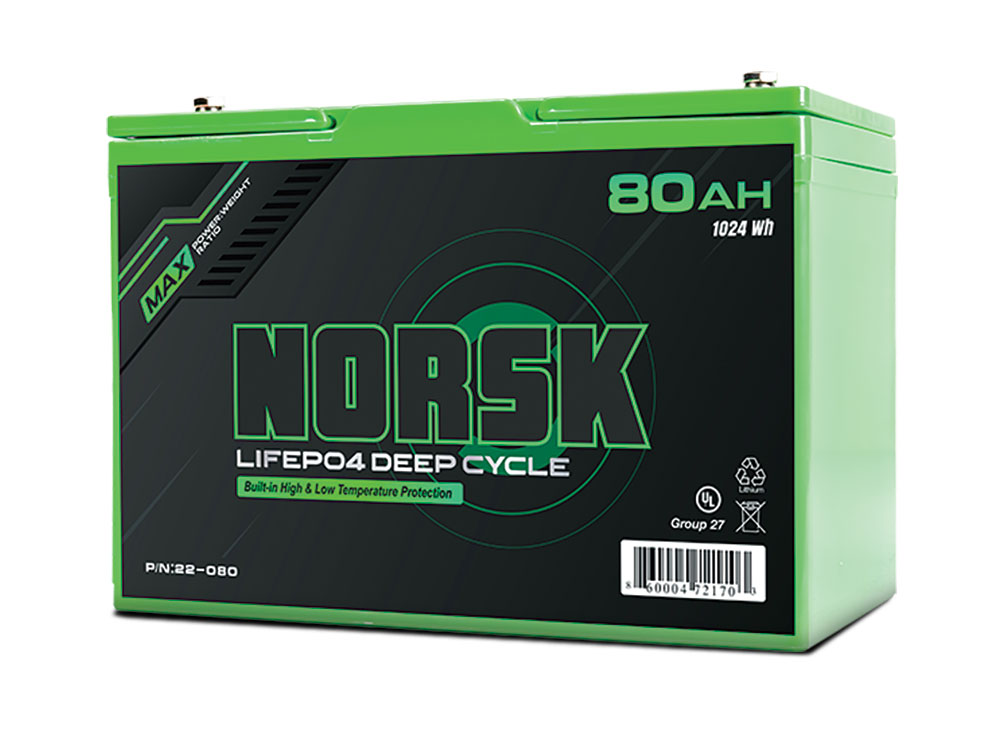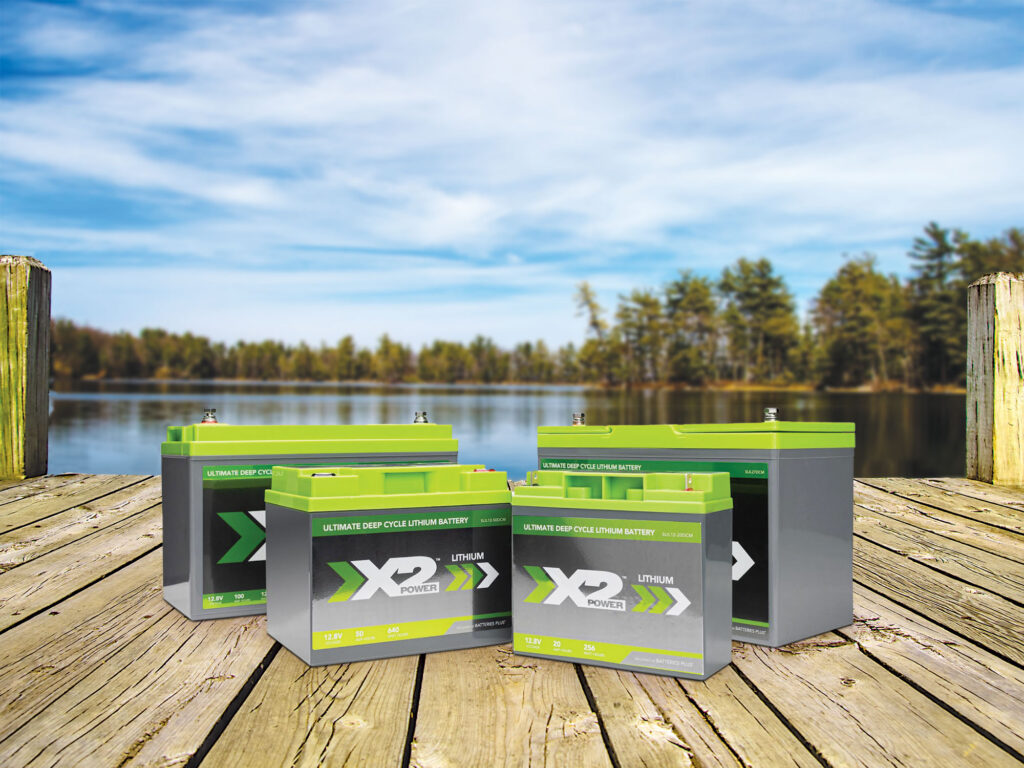The Basics of Lithium Marine Batteries
 Most lithium marine batteries are constructed using lithium iron phosphate.
Courtesy NORSK Lithium
Most lithium marine batteries are constructed using lithium iron phosphate.
Courtesy NORSK Lithium
Lithium batteries have opened up an entirely new category of electrical power for boats. That is due to their energy density, allowing a lithium battery to pack in as much voltage and amps as a lead-acid battery but at one-third to one-half the weight. They’ve been powering professional anglers’ trolling motors for years and, with an inverter, are increasingly common replacements for gensets. Because lithium batteries can recharge in much less time than lead-acid batteries, a short run of an engine’s alternator integrated with a DC-to-DC charger can quickly bring them to full power.
What Kind of LithiumLithium iron phosphate (LiFePO4) is the chemistry settled upon by most battery-makers. Past formulas included cobalt and manganese for lithium-ion batteries. Though powerful, they proved hazardous. Runaway discharges caused fires that were inextinguishable—a poor trait in a boat or anywhere.
Ground Control to Major TomRegular power updates from your batteries are essential. Some lithium batteries such as X2Power employ Bluetooth wireless communications to report discharge rate, battery temperature, state of charge and more to smartphone apps, bypassing a gauge, saving space on a tight helm. Others, such as Brunswick’s ReLiOn batteries, offer a battery gauge that reports data to an MFD.
Wake-Up CallIf a LiFePO4 battery runs too low, it might require an intervention to wake it up—an electronic slap in the face. A shot of voltage wakes the battery management system, which reconnects the batteries so that it can be recharged. Such devices—basically a voltage-adjustable charger (5 volts to 36 volts)—are available for $25 at Amazon. Alternatively, Norsk and Brunswick’s ReLiOn LiFePO4 batteries have a button that wakes them from snooze. Some batteries optionally offer this feature.
Getting a ChargeBe sure the boat’s charge system is amenable to lithium. Some, such as JL’s Charge, can be set to lithium by the user. Others, such as Dual Pro chargers, have to be converted with a module that can only be factory-installed. So far, we haven’t seen onboard chargers that will “slap” their batteries. And they charge them in a different way than lead-acid batteries get charged. Typically, a charger such as Dual Pro and JL Marine’s Charge systems replenish higher-voltage lithium trolling motors or house batteries through the cranking battery bank by converting cranking voltage to house voltage, which could be 24, 36 or even 48 volts.
Read Next: Choosing a Lithium Battery for Your Boat
 X2Power batteries employ Bluetooth wireless communications to report on the current state.
Courtesy X2Power Battery, Adobe Stock / ehrlif (background for battery)
Long Payback Game
X2Power batteries employ Bluetooth wireless communications to report on the current state.
Courtesy X2Power Battery, Adobe Stock / ehrlif (background for battery)
Long Payback Game
LiFePO4 batteries can be fully discharged and recharged up to 10 times more than lead-acid AGM batteries. So, even though they cost up to one and a half times the priciest AGM battery, they continue to deliver power long after AGMs give out, making them cheaper in the long run, also reducing installation charges. They can provide full power to the last amp (they can be discharged to 10 percent without damage when the battery management system shuts them down). Aboard my Ranger 2510 Bay, 60 amp-hours of 36-volt lithium power gives more fishing time than 100 amp-hours of AGM power of the same voltage.
Cuts WeightThere are two ways to improve performance in a boat. One is to add more horsepower. The other is to remove weight. Take a bass boat with one lead-acid starting battery and three AGM trolling-motor batteries—the equivalent of two heavyweight boxers in the boat. Lithium batteries can cut that weight from 400 pounds to 150, adding speed and efficiency.
Balance of PowerNote that a lead-acid battery’s weight might be factored into the center of gravity equation of your boat. If the boat is designed to carry battery weight forward and you install lighter lithium batteries, you might have to shift other gear forward, or choose a new prop, to manage the now lifting and falling bow. If the batteries are on the lateral centerline, the CoG won’t be disturbed. Most center-consoles are so arranged. But bass boats, bowriders and cuddies often don’t have space amidships. It might be wise to run such a boat after removing some of the batteries to get a feel for the lighter load.
LowdownLiFePO4 batteries are worth the initial money outlay, and the advantages far outweigh the risks. In a new-boat purchase, a set of LiFePO4 batteries could last 10 years—likely longer than your interest in the boat. On a used boat, changes to the boat’s weight can be mitigated and shouldn’t be cause to avoid this important, useful upgrade.
The post The Basics of Lithium Marine Batteries appeared first on Boating Mag.
- Home
- About Us
- Write For Us / Submit Content
- Advertising And Affiliates
- Feeds And Syndication
- Contact Us
- Login
- Privacy
All Rights Reserved. Copyright , Central Coast Communications, Inc.